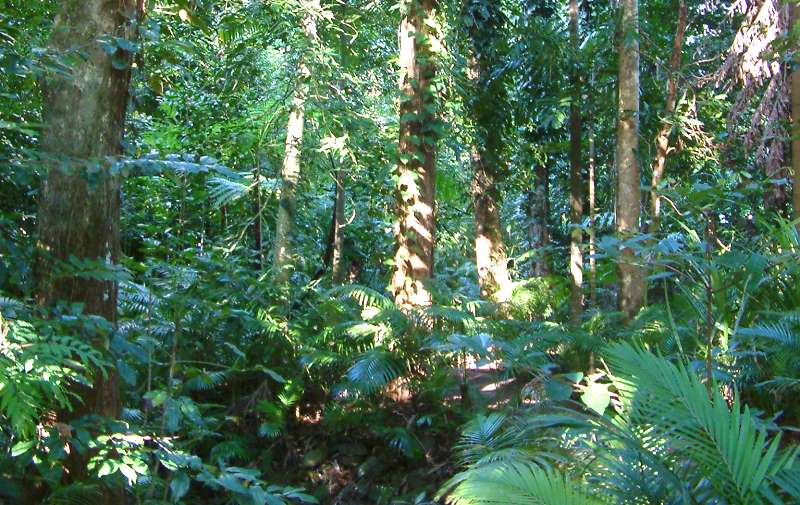|


World
Heritage Listed in 1988, the Daintree Rainforest
(Queensland's Wet Tropics), with an area of 1200 square
kilometres, has become recognised internationally for
its diversity and uniqueness mainly to do with botanical
aspects.
With a canopy up to 45 metres above the forest floor, it
supports, at every level, from the highest tree tops to
the leaf littered floor, the largest range of plants and
animals on earth.
The rainforest contains 30% of all frog, marsupial and
reptile species, and 65% of the bat and butterfly
species of Australia.
In addition 50% of Australia’s birds reside in
Queensland's Wet Tropics and Great Barrier Reef islands
centred by the rainforest. The bird population of the
area consists of 430 species, 13 of which are found
nowhere else on the planet. Furthermore, the area
contains the highest number of plant and animal species
that are rare, or threatened with extinction.
The ecosystem of the Daintree Rainforest is one of the
most fascinating and intricate in the world. Many of the
plants are "co-dependent", and would not survive without
the others they depend upon for one reason or another.
Because of its fragile ecosystem, government regulations
restrict movement by people within the World Heritage
Listed Daintree Rainforest. However, tourism operators
are aware of the fragile nature of the area and take
measures to lower the impact made by the large number of
holiday makers who now visit the region.
When visiting any area in the Daintree Rainforest make
every effort to leave it as you found it. Daintree
Tourism Information. Be sure to obey all signage
and any verbal instructions given by tourism operators.

|